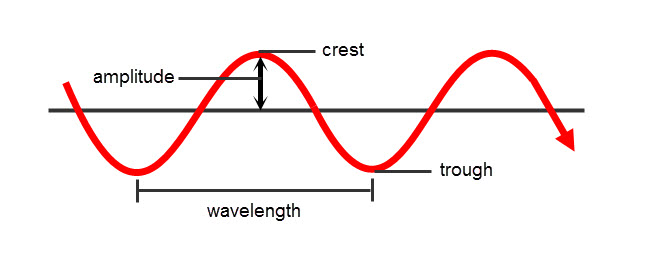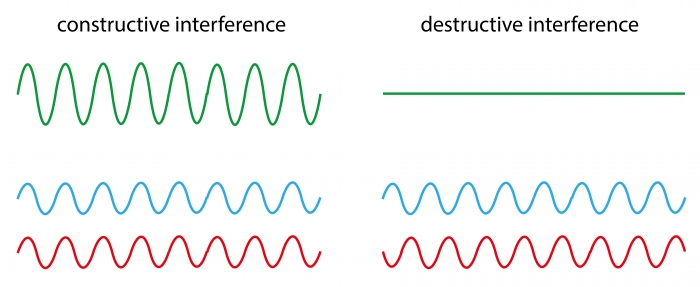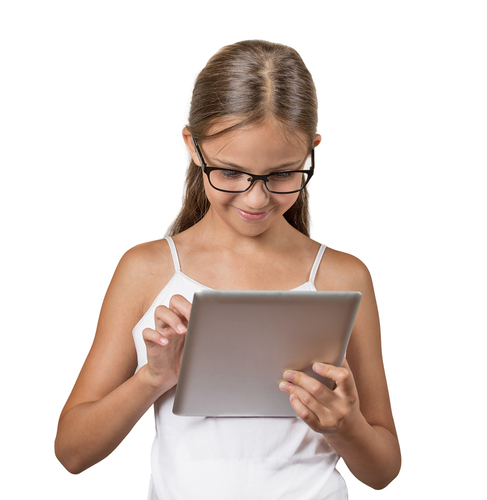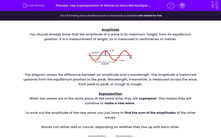Amplitude
You should already know that the amplitude of a wave is its maximum 'height' from its equilibrium position. It is a measurement of length, so is measured in centimetres or metres.

The diagram shows the difference between an amplitude and a wavelength. The amplitude is measured upwards from the equilibrium position to the peak. Wavelength, meanwhile, is measured across the wave, from peak to peak, or trough to trough.
Superposition
When two waves are in the same place at the same time, they will superpose. This means they will combine to make a new wave.
To work out the amplitude of the new wave, you just have to find the sum of the amplitudes of the other waves.
Waves can either add or cancel, depending on whether they line up with each other.

As we can see here, when the peaks of each wave line up with each other, you add the amplitudes together. This is called constructive interference.
When the peaks of one wave line up with the troughs of the other wave, you subtract the amplitudes from each other. This is called destructive interference.
Notice that, if the wavelengths of each original wave is the same, then the wavelength of the new wave remains the same. You do not need to add or subtract the wavelengths.
Let's have a go at some questions. You can look back at this page by clicking on the red button on the side of the screen at any point.








